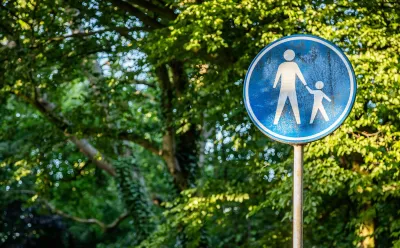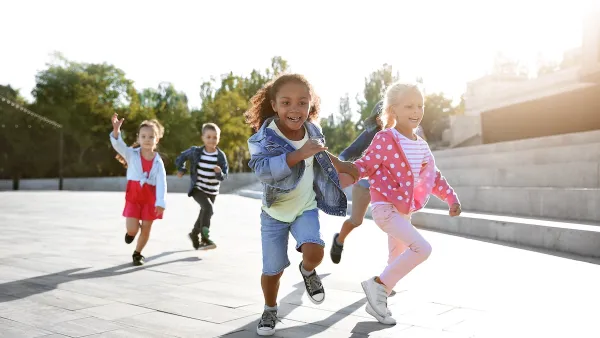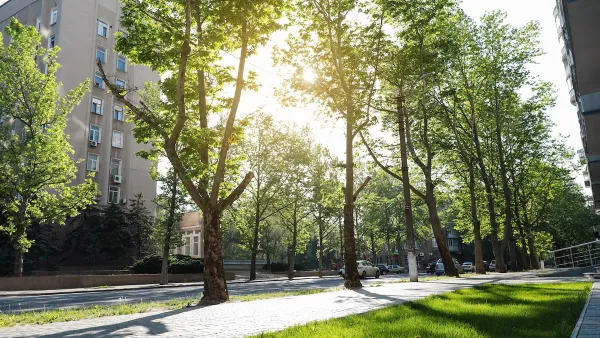How parklets, open streets, and green spaces make cities safer and friendlier for children and families.

In a piece published in Streetsblog USA, Emily Stutts highlights three of the best lessons she drew from a learning tour of Munich and Rotterdam, European cities that have made a conscious effort to make streets safe, comfortable, and welcoming for children and families and in doing so, have made the public realm better for everyone.
For example, spaces like parklets can spur permanent change. “While a parklet might start as a one-day project — perhaps for international Park(ing) Day — these placemaking powerhouses can easily become a permanent or semi-permanent fixture of your school community.”
Open streets, like parklets, offer places where children and families can meet and play safely. For Stutts, “Play is a universal language for connection and happiness, if only we create the space to do so.”
Stutts points out that in the Netherlands, cities have a friendly competition to see who can create the most green spaces on their urban streets. “This same solution could be implemented in school parking lots, driveways, or along side-streets near schools in the U.S., too.”
Stutts believes that “by experimenting with our streets and parking lots, we are allowing ourselves and our students to dream and imagine the kind of world they want to live in.” Starting with schools can spark ideas for broader change across neighborhoods and cities. “The infrastructure supports kids’ independence, safety, playfulness, and joy — while also supporting citizens of all other age groups, too!”
FULL STORY: Three Ways To Reimagine Streets for Kids

National Parks Layoffs Will Cause Communities to Lose Billions
Thousands of essential park workers were laid off this week, just before the busy spring break season.

Retro-silient?: America’s First “Eco-burb,” The Woodlands Turns 50
A master-planned community north of Houston offers lessons on green infrastructure and resilient design, but falls short of its founder’s lofty affordability and walkability goals.

Delivering for America Plan Will Downgrade Mail Service in at Least 49.5 Percent of Zip Codes
Republican and Democrat lawmakers criticize the plan for its disproportionate negative impact on rural communities.

Test News Post 1
This is a summary

Test News Headline 46
Test for the image on the front page.

Balancing Bombs and Butterflies: How the National Guard Protects a Rare Species
The National Guard at Fort Indiantown Gap uses GIS technology and land management strategies to balance military training with conservation efforts, ensuring the survival of the rare eastern regal fritillary butterfly.
Urban Design for Planners 1: Software Tools
This six-course series explores essential urban design concepts using open source software and equips planners with the tools they need to participate fully in the urban design process.
Planning for Universal Design
Learn the tools for implementing Universal Design in planning regulations.
EMC Planning Group, Inc.
Planetizen
Planetizen
Mpact (formerly Rail~Volution)
Great Falls Development Authority, Inc.
HUDs Office of Policy Development and Research
NYU Wagner Graduate School of Public Service





























